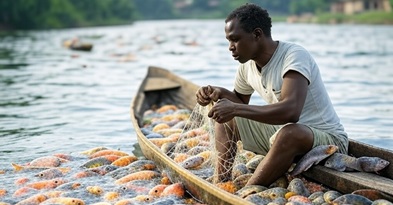
Sustainable Fisheries Techniques for High Yields
Sustainable fisheries are essential for preserving marine ecosystems, ensuring long-term food security, and supporting the livelihoods of millions worldwide. With increasing demand for fish and seafood, it is crucial to implement responsible fishing practices that balance productivity with environmental conservation.
At MBL Multifunctional Group Ltd, we are dedicated to promoting sustainable fisheries practices that enhance yields while maintaining aquatic biodiversity. In this blog, we explore five key techniques that help fisheries achieve long-term profitability and ecological sustainability.
1. Responsible Aquaculture Practices
Aquaculture, or fish farming, plays a critical role in meeting global seafood demand. However, unsustainable aquaculture can lead to habitat destruction, water pollution, and disease outbreaks. Implementing responsible aquaculture techniques ensures high yields while protecting aquatic ecosystems.Best Practices in Sustainable Aquaculture:
- Species Selection: Cultivating native or non-invasive species suited to the local environment.
- Efficient Feed Management:Using high-quality, sustainable feed to improve fish health and reduce waste.
- Water Quality Control:Regular monitoring and filtration systems to maintain clean water conditions.
- Eco-Friendly Farming Systems: Adopting Recirculating Aquaculture Systems (RAS) to minimize water use and waste discharge.
2. Eco-Friendly Fishing Techniques
Overfishing and destructive fishing methods threaten marine biodiversity. Sustainable fishing practices help maintain fish populations and prevent ecosystem degradation.Sustainable Fishing Methods:
- Selective Fishing Gear: Using nets with escape panels or hook-and-line fishing to minimize bycatch.
- Fishing Quotas & Seasonal Regulations: Adhering to legal catch limits and avoiding fishing during breeding seasons.
- Marine Protected Areas (MPAs): Supporting conservation zones to allow fish stocks to replenish.
- Community-Based Fisheries Management: Encouraging local fishing communities to implement sustainable practices.
3. Fish Stock Enhancement & Habitat Conservation
Maintaining fish populations requires a combination of habitat protection and active stock enhancement programs.Key Strategies:
- Artificial Reefs & Hatcheries: Supporting fish reproduction and population growth.
- Mangrove & Wetland Conservation: Protecting coastal habitats that serve as breeding and nursery grounds.
- Water Pollution Control: Preventing industrial and agricultural runoff from contaminating aquatic ecosystems.
- Biodiversity Monitoring: Conducting regular assessments to track fish population health and diversity.
Sustainable Water Management Practices:
- Drip Irrigation: A highly efficient technique that delivers water directly to plant roots, minimizing evaporation.
- Rainwater Harvesting: Collecting and storing rainwater for irrigation during dry seasons.
- Mulching: Applying organic mulch around crops to retain soil moisture and suppress weeds.
4. Integrated Multi-Trophic Aquaculture (IMTA)
IMTA is an innovative approach that mimics natural ecosystems by cultivating multiple aquatic species together. This method improves efficiency, reduces waste, and enhances environmental sustainability.Benefits of IMTA:
- Nutrient Recycling: Waste from fish farming serves as nutrients for seaweed and shellfish cultivation.
- Diversified Production: Farmers can harvest multiple species, increasing profitability.
- Reduced Environmental Impact: Enhances ecosystem balance and reduces pollution.
- Improved Disease Control: Natural interactions between species help control parasites and diseases.
- Improved Disease Control: Natural interactions between species help control parasites and diseases.
5. Smart Fisheries Technologies
The integration of technology in fisheries management improves efficiency, sustainability, and profitability.Examples of Smart Fisheries Technologies:
- Satellite & GPS Tracking: Monitoring fish movements and reducing illegal fishing activities.
- AI & Data Analytics: Predicting fish stocks and optimizing harvesting schedules.
- Automated Fish Feeding Systems: Enhancing growth rates while minimizing feed waste.
- Blockchain for Traceability: Ensuring transparent and sustainable seafood supply chains.
